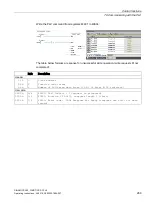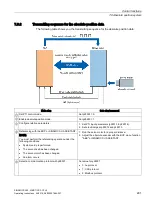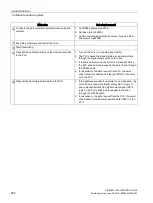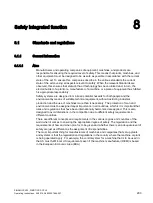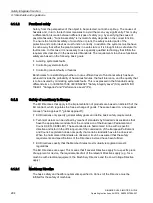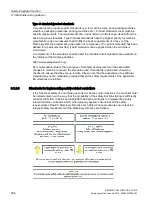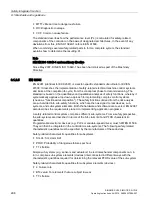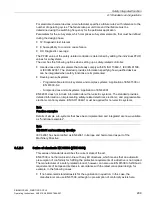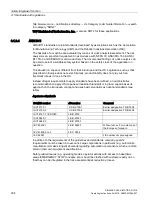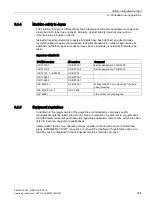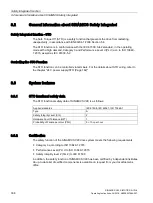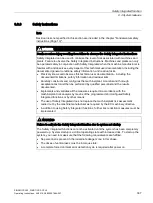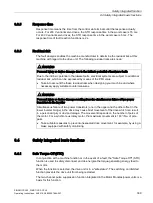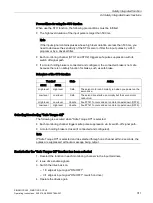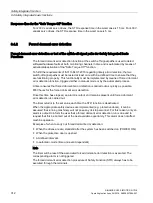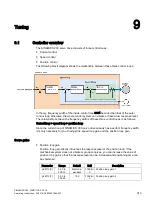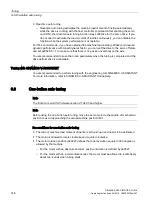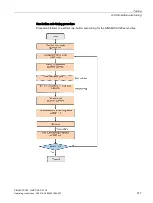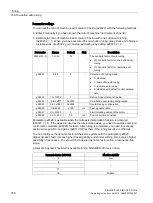
Safety Integrated function
8.1 Standards and regulations
SINAMICS V90, SIMOTICS S-1FL6
Operating Instructions, 04/2019, A5E36037884-007
303
applicable regulations and are "forced" to fulfill the requirement to use state-of-the-art
technology.
Third-party insurance companies generally demand that their customers fulfill the applicable
standards of the standards organizations. Self-insured companies are not initially subject to
this requirement but, in the event of an accident, they must provide verification that they
have applied generally-recognized safety principles.
8.1.3.2
NRTL listing
To protect employees, all electrical equipment used in the USA must be certified for the
planned application by a "Nationally Recognized Testing Laboratory" (NRTL) certified by the
OSHA. NRTLs are authorized to certify equipment and material by means of listing, labeling,
or similar. Domestic standards (e.g. NFPA 79) and international standards (e.g. IEC/EN
61508 for E/E/PES systems) are the basis for testing.
8.1.3.3
NFPA 79
Standard NFPA 79 (Electrical Standard for Industrial Machinery) applies to electrical
equipment on industrial machines with rated voltages of less than 600 V. A group of
machines that operate together in a coordinated fashion is also considered to be one
machine.
For programmable electronics and communication buses, NFPA 79 states as a basic
requirement that these must be listed if they are to be used to implement and execute safety-
related functions. If this requirement is fulfilled, then electronic controls and communication
buses can also be used for Emergency Stop functions, Stop Categories 0 and 1 (refer to
NFPA 79 9.2.5.4.1.4). Like EN 60204-1, NFPA 79 no longer specifies that the electrical
energy must be disconnected by electromechanical means for emergency stop functions.
The core requirements regarding programmable electronics and communication buses are:
system requirements (see NFPA 79 9.4.3)
1. Control systems that contain software-based controllers must:
●
In the event of a single fault
–
cause the system to switch to a safe shutdown mode
–
prevent the system from restarting until the fault has been rectified
–
prevent an unexpected restart
●
Offer the same level of protection as hard-wired controllers
●
Be implemented in accordance with a recognized standard that defines the requirements
for such systems.
2. IEC 61508, IEC 62061, ISO 13849-1, ISO 13849 2 and IEC 61800-5-2 are specified as
suitable standards in a note.
Underwriter Laboratories Inc. (UL) has defined a special category for "Programmable Safety
Controllers" for implementing this requirement (code NRGF). This category covers control
devices that contain software and are designed for use in safety-related functions.
A precise description of the category and a list of devices that fulfill this requirement can be
found on the Internet at the following address:

